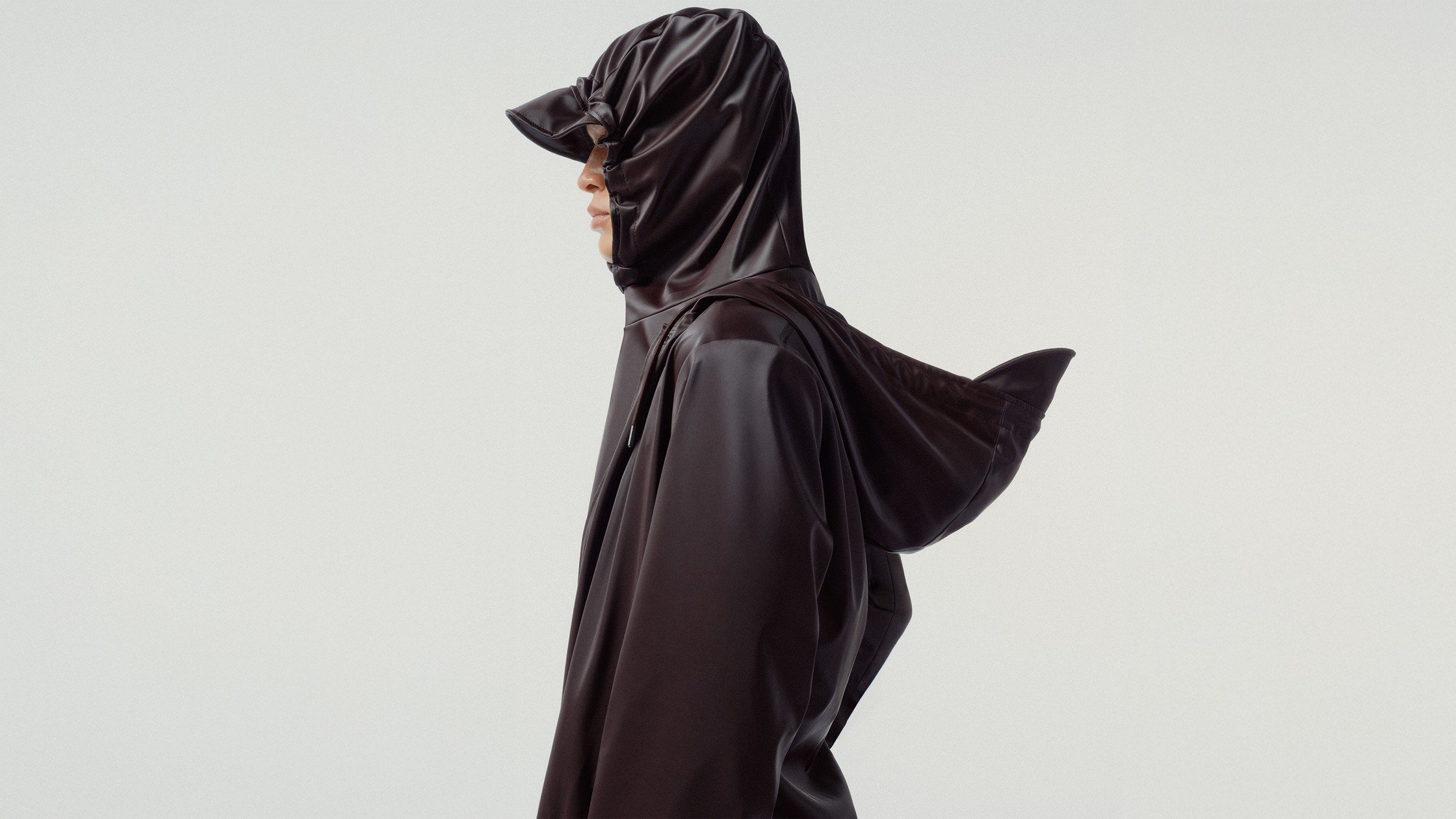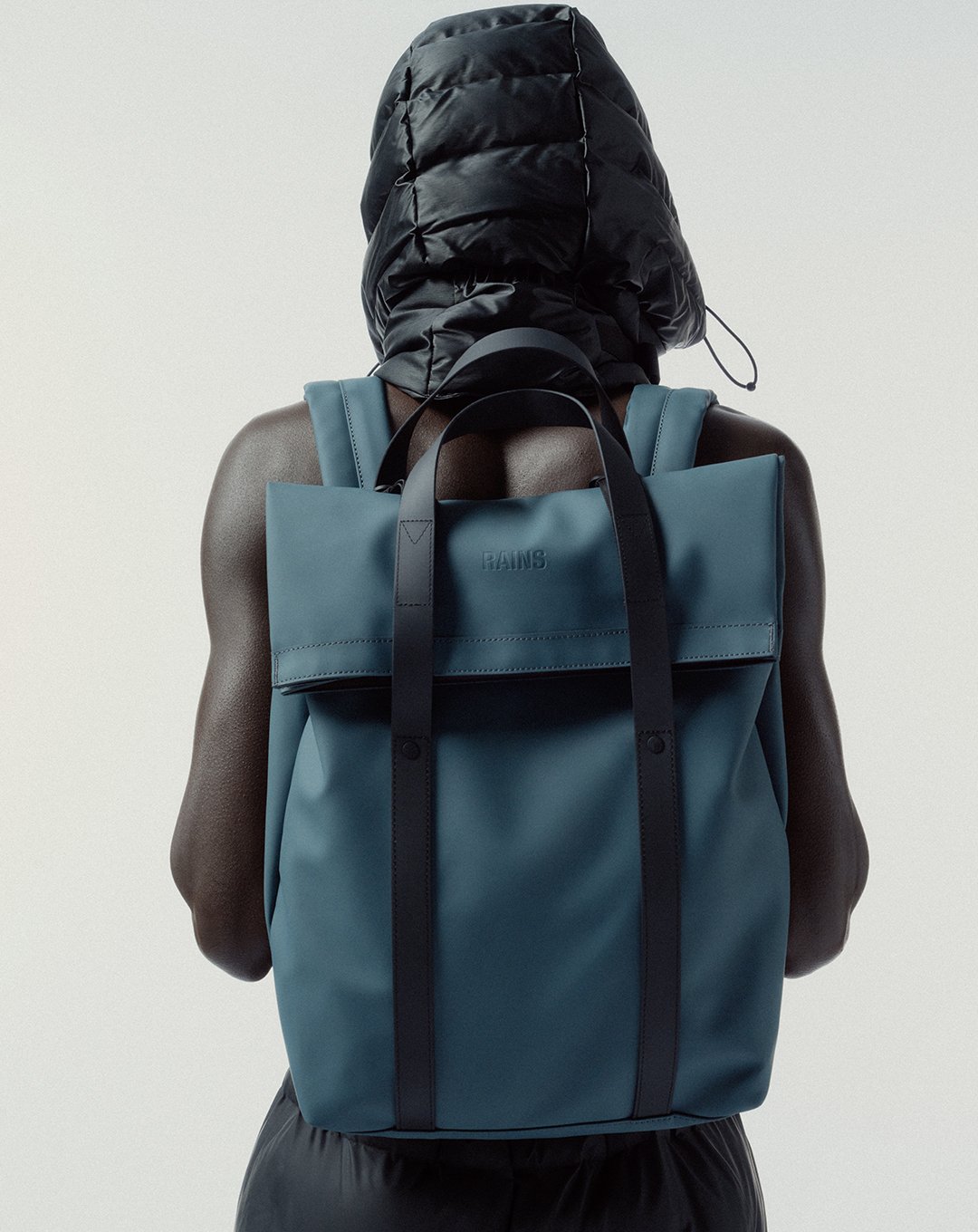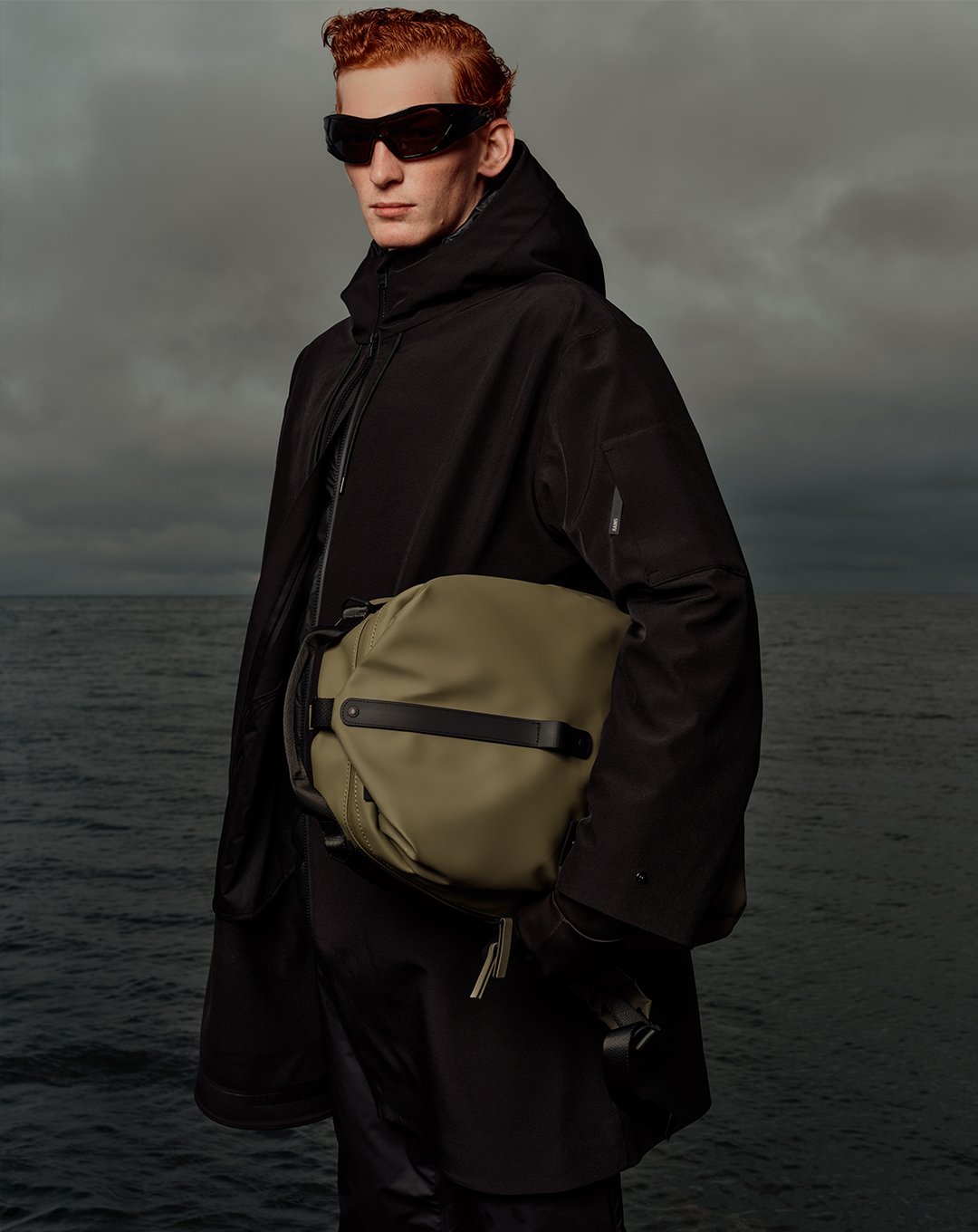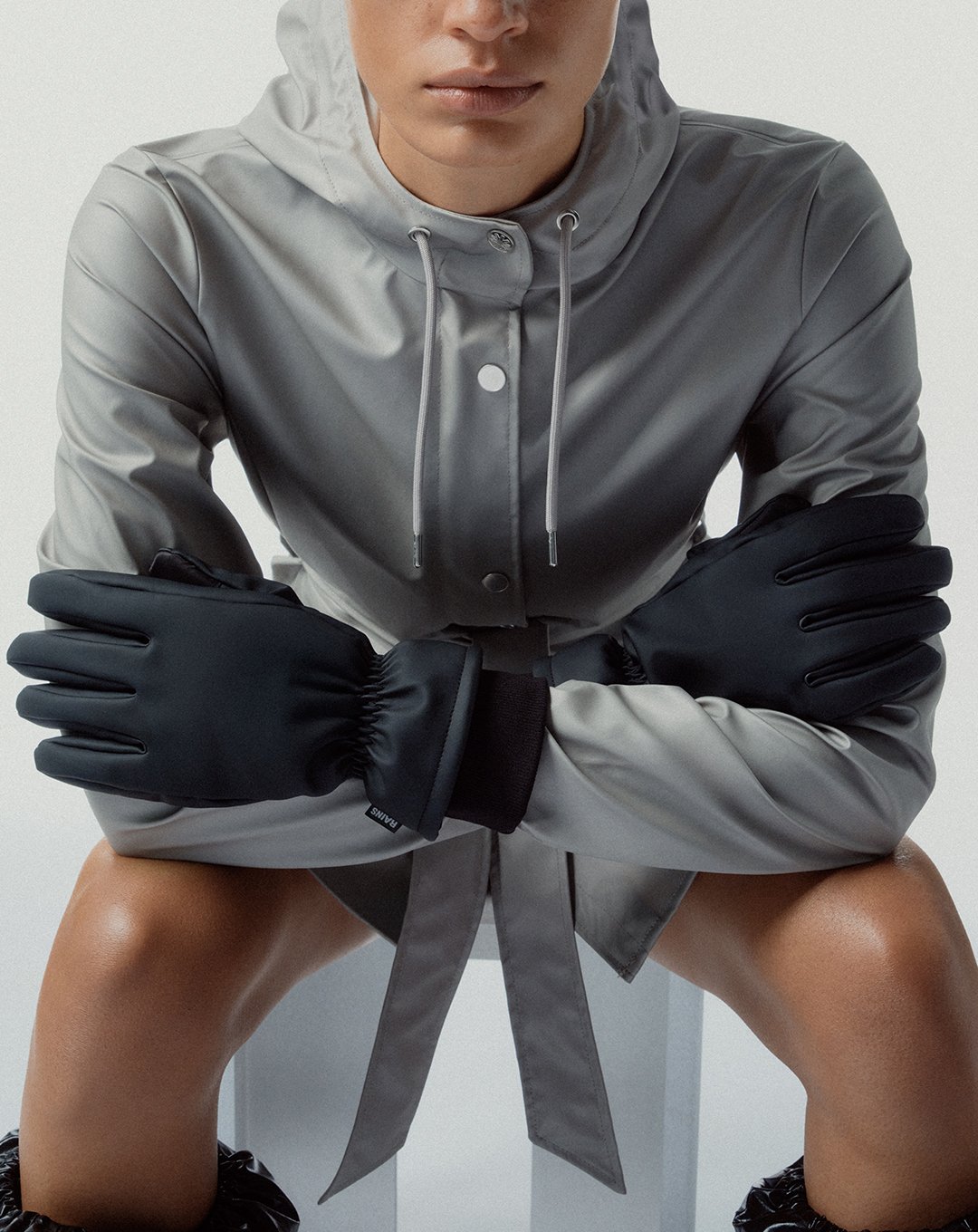How Rainwear Became the Coolest Category in Fashion

“There’s no such thing as bad weather, just bad clothes.”
Waterproof clothing and accessories had been living in that liminal space between necessity and style for a while. They were what you wore because you had to, not because you wanted to. But the conversation around practicality in fashion has shifted thanks to the rise of gorpcore, luxury houses playing with outdoor tech and interpreting synthetics through a designer lens, and a wider appetite for clothes that actually work in the real world.
The waterproof category has found itself unexpectedly chic and a sign of style fluency. The question isn’t whether you need a water-resistant jacket or bag. It’s whether you can afford to ignore how stylish they’ve steadily become.

Afterthrought to Centrepiece
Forget the old idea that waterproof outerwear was an emergency poncho or a sad cagoule scrunched up at the back of your wardrobe. Now, it’s the statement layer that can often be the centerpiece of your seasonal style: structured trench coats in bonded cotton, waxed Barbour-style jackets reimagined in modern cuts, lightweight windbreakers finished in vibrant colors that are less about necessity and more about recognition.
These are pieces that don’t sit outside from your wardrobe waiting to be used; they define it. The detailing that once read as purely technical, such as storm flaps, taped seams, and high collars, is now seen as design language in its own right. A good waterproof doesn’t hide that it’s functional, it shouts about it.

Utility as Personality
Where once you might have merely tolerated a nylon backpack, now coated totes, structured crossbody bags, and rubberised holdalls are designed with as much personality as more classic leather styles. Even small-scale accessories — from waterproof baseball caps to bucket hats and ultra-functional gloves — have crossed the line from the purely utilitarian to cultural markers of good taste and knowledge.
These aren’t ‘in case it rains’ items anymore — they’re shaping how an outfit reads before that first drop even falls.

Textural with Technical
The real revolution happening here has been at a fabric level. Incredibly lightweight nylons with a subtle sheen, waxed cotton that is more akin to the character of leather thanks to the increased patina the more you wear it, technology like the breathable but non-porous GORE Tex, or taped seams make the elements more than manageable.
These materials allow water resistance to carry texture, tone, and a sense of story. The key shift is that waterproof doesn’t have to mean synthetic shine or overly sporty finishes. Done right, these fabrics belong as much alongside tailoring and everyday wear as they do on the hiking trail.

Preparedness is the Appeal
There is something inherently stylish in looking well-prepared. A waterproof trench over suiting has the sharpness of a romantic old Hollywood rain scene. A waxed jacket over denim channels a rugged, rural appeal. Even sneakers with waterproof finishes now give the confidence of all-weather readiness without tipping too far into ‘gear’.
Water resistance doesn’t need to detract from your look anymore, it adds a layer of considered resilience, like armor for dressing where weather is as unpredictable as everything else.

Intention, Not Interruption
Water resistance becomes intentional when it stops being about bracing against inconvenience and starts being about expression. In an era where climate unpredictability is the norm, the truly stylish move isn’t ignoring function, but owning it, folding into the form.
Waterproof pieces aren’t an interruption to your wardrobe, they’re proof that style can thrive in any condition.